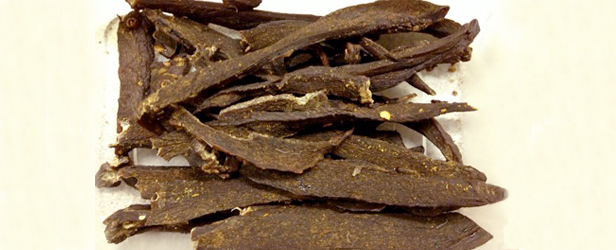
“It looks like tree bark” was my wife’s official verdict, and I was finding it hard to disagree. Still, it tastes better than anything I’ve ever bought from a store and was a fraction of the cost.
I’d been thinking for a while about making jerky, but for some reason I was always scared off. I was always surprised by how expensive it was to buy and assumed there was something I didn’t understand about the process. I suppose I had a false impression that there was some kind of alchemy behind it, something passed down from rancher to cattle thief and back again. Yet, it turns out that I was totally wrong!
After doing a bit of research, I found that the jerkying process is broken down into two simple steps: brining and drying. First, though, you need the meat. For this recipe I used venison, but you can pretty much use anything you like, although traditionally it is made from darker meats (beef, elk, caribou, etc). Water foul would also be good, and you could cold smoke the meat first for extra depth of flavor.
Once you've chosen your meat, you need to slice the meat into strips across the grain about 1/4” thick. A good tip to get it even is to freeze the meat beforehand. Let it thaw until it is just soft enough to cut but still holds its shape, and you will get nice even strips.
For the brine, there are literally hundreds of variations out there, but they’re all pretty similar. I thought I would throw in a chipotle chili to personalize this version, and I’m glad I did.
- 1/4 cup soy sauce
- 1/5 cup Worcestershire sauce
- Half a dried chipotle chili (You can leave it out if you don’t want it hot)
- 1 tsp salt
- 1 tsp pepper
- 1 tsp garlic salt
- 1 tsp dried onion powder
Mix the meat in with the brine and let it marinade over night.
To dry the strips, you can use any of many specific jerky making machines or dehumidifiers. You can also hang it out to dry in the sun if you have the patience. However, there is an even easier solution: hang the jerky on kebab skewers (to make sure the air can flow around all of the pieces), and then suspend it from a shelf in the oven. Make sure to place a tray below the jerky to catch the drips—this will save you from having to clean the oven out.
Set the oven to its lowest setting—if you have a fan, you can usually go as low as 100F. For a gas oven, you can still get the temperature low enough, but you need to wedge the door open slightly to let the heat escape. (This isn’t exactly efficient, so maybe that’s why the store-bought stuff is so expensive). You will need to let it dry for about four hours, but check it every hour to make sure it is okay. Obviously, the jerky wants to be dried; however, it should tear and not snap. If it snaps, you’ve gone too far. So use your judgment. If you can manage not to eat it all straight away, this stuff will be a portable protein snack for six months as long as you keep it in an airtight container.











